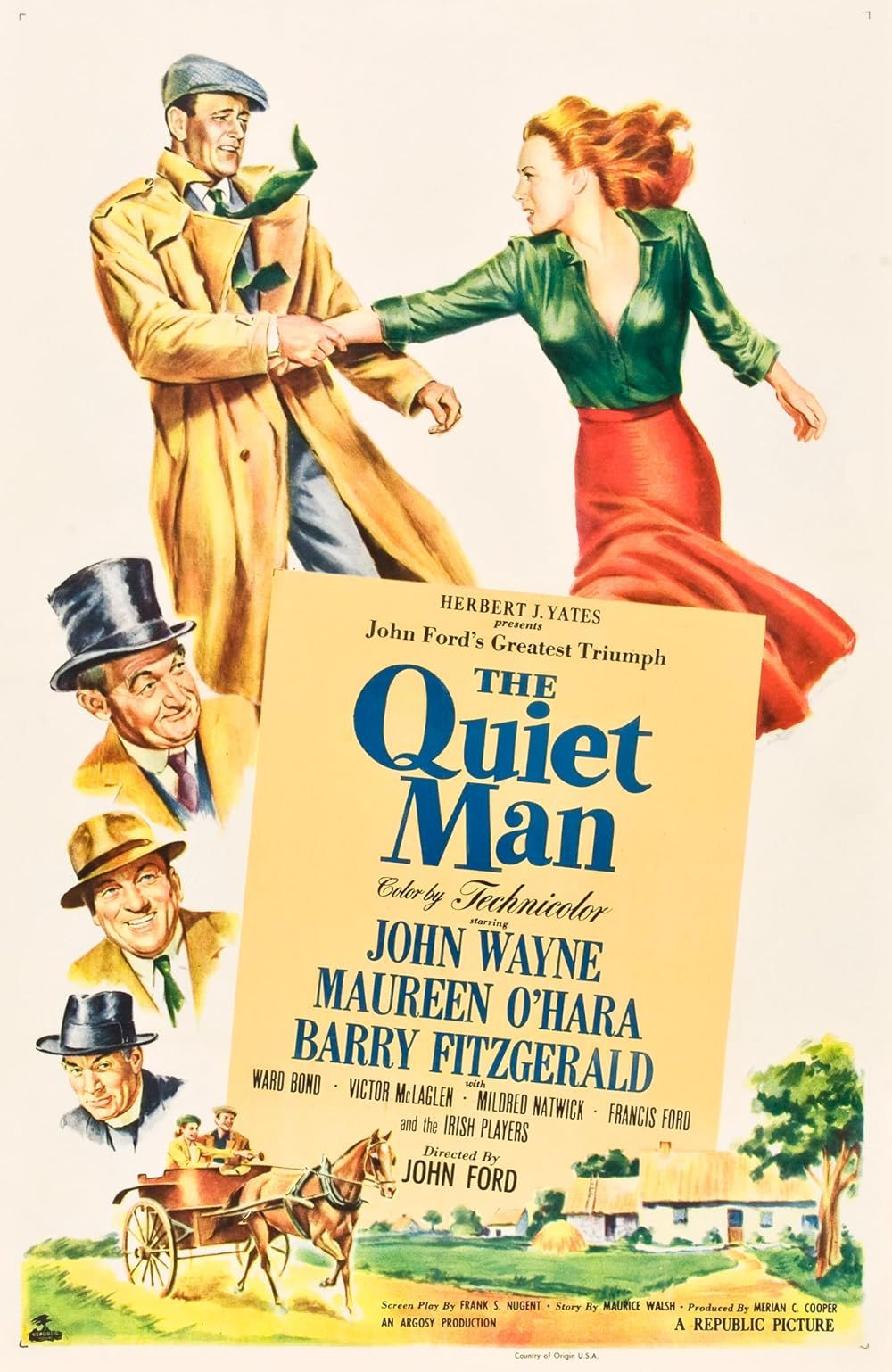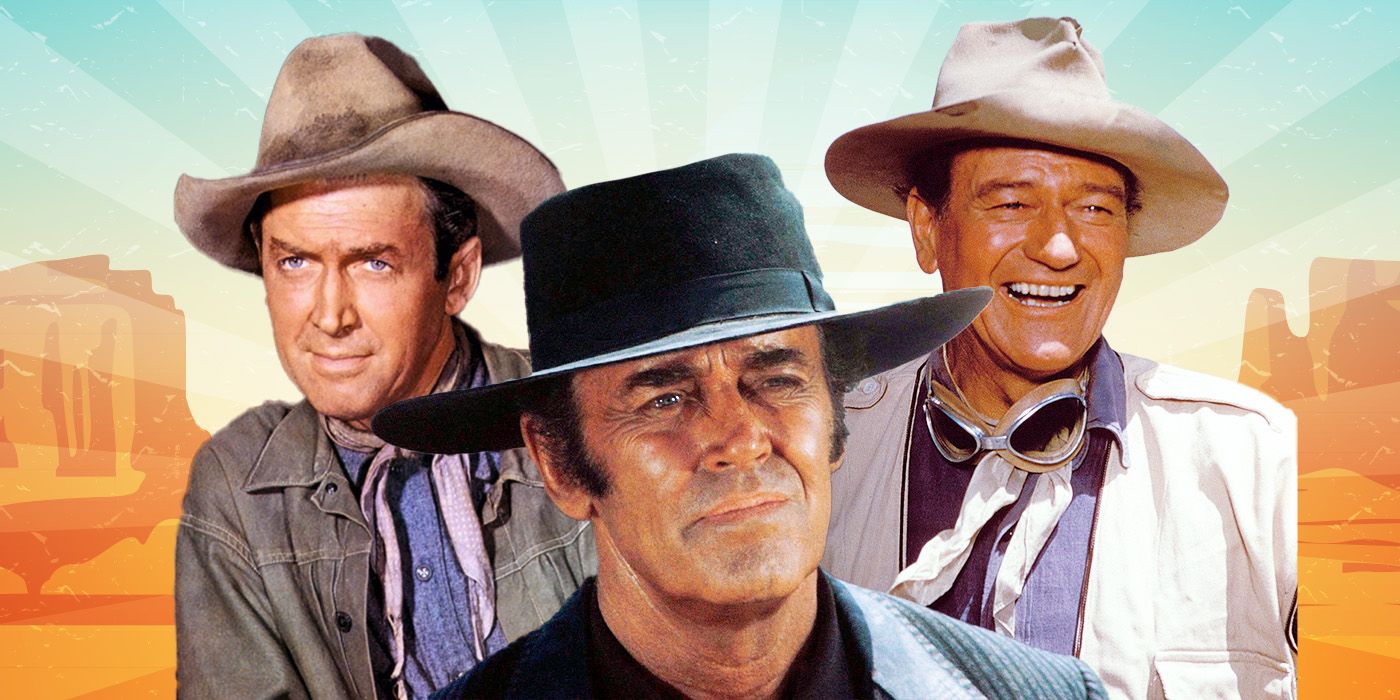The Western king showed his talents as a romantic lead in many great comedy roles.
The Big Picture
- John Wayne starred in romantic comedies early on in his career to showcase his versatility and compete with other actors.
- From
McLintock!
to
The Quiet Man
, Wayne’s romantic comedy roles allowed him to diversify his career and challenged him to show a different side of his personality. - Wayne’s romantic comedies influenced his Western roles, merging his two on-screen personas and providing relief from the darker Western films of the 1960s.
There are few figures within cinematic history that are as synonymous with the Western genre as John Wayne. While he was certainly not the only Hollywood actor to portray an iconic gunslinger, Wayne embodied rugged, world-weary anti-hero characters better than nearly anyone else. Western roles bookended his career; Wayne got his breakthrough role in John Ford’s iconic 1939 thriller Stagecoach, which showed the Western genre’s potential to be mass market entertainment, and concluded his filmography with Don Siegel’s The Shootist, a dark revisionist Western that allowed him to reflect upon his career. Although his work is essential to the legacy of cinematic Westerns, Wayne was a far more experimental actor than he was often given credit for. As good as he was at playing gunslingers, Wayne showed his talents as a romantic lead in many great comedy roles.

The Quiet Man
A retired American boxer returns to the village of his birth in 1920s Ireland, where he falls for a spirited redhead whose brother is contemptuous of their union.
- Release Date
- June 6, 1952
- Director
- John Ford
- Cast
- John Wayne , Maureen O’Hara , Barry Fitzgerald , Ward Bond , Mildred Natwick
- Runtime
- 129
John Wayne Got His Start in Romantic Comedies
While his partnership with John Ford became one of the best actor-director duos in screen history, not all of John Wayne’s Westerns had received the same level of acclaim that Stagecoach had. In fact, he had starred in dozens of Westerns in the early 1930s that had failed to make him a household name, as they lacked the more nuanced storylines that were characteristic of Ford’s work. It was important for Wayne to show that he had talents beyond the Western genre, particularly during an era where many other actors were working on similar projects. Wayne’s contemporaries, such as Jimmy Stewart and Henry Fonda, had shown they were not exclusively bound to Westerns; in order to compete with them, Wayne had to show his versatility.
As good as Wayne was in Stagecoach, it presented a unique issue that only stars of his caliber had to deal with: Wayne was so charismatic that he tended to overshadow his co-stars. In order to sustain the longevity of his career, Wayne tried co-starring alongside some established Hollywood stars who could play off of his kinetic energy. Wayne’s talents as a romantic hero were first revealed in 1943’s A Lady Takes a Chance, a romantic comedy that he co-starred in alongside Jean Arthur. The film centers on a group of suitors, including Wayne’s Duke Hudkins, who vie for the attention of the illustrious socialite Molly J. Truesdale (Arthur) in New York City. Wayne finally had a co-star who was as scene-stealing as he was, and Arthur challenged him to be an even better actor.

The Only Western With John Wayne, Jimmy Stewart, Henry Fonda, & the Rest of Hollywood
The box office hit had an A-list cast and was directed by three of the best filmmakers of their generation.
Although the 1940s saw him starring in many other Western films, including Ford’s Christmas classic 3 Godfathers, Wayne’s romantic comedy roles allowed him to diversify his career. It’s fair to say that many of his Western characters were starting to blend together, and Wayne risked becoming a caricature if he was simply delivering the same mannerisms in every role. By appearing in a few screwball comedies every few years, Wayne challenged himself to show a different side of his personality. He co-starred with Claudette Colbert in the wild road trip adventure Without Reservations, which showed his knack for physical comedy; he also appeared in 1949’s The Fighting Kentuckian, a satirical historical romantic epic that paired him alongside Vera Ralston.
Romantic Comedies Made John Wayne a Better Actor
While Westerns like The Searchers and Rio Grande solidified their success making Westerns together, one of John Wayne and John Ford’s greatest collaborations was the 1952 romantic comedy The Quiet Man. A modern day retelling of William Shakespeare’s The Taming of the Shrew, The Quiet Man follows the former boxer Sean Thorton (Wayne) as he returns to his historic homeland of Innisfree, Ireland, and falls in love with the snarky woman Mary Kate Danaher (Maureen O’Hara). One of the first American films shot in Ireland, The Quiet Man stood out for its beautiful aesthetics and authentic depiction of the Irish courting process. It was another case where Wayne was well-matched with his co-star, as he and O’Hara spend a majority of the film sniping at each other as they fall deeper in love. While one of his most endearingly funny roles, Wayne also got to show his sensitivity during a pivotal flashback sequence that detailed Thorton’s tragic backstory.
Ford had known how to work with Wayne in a way that best suited his acting talents. However, Wayne’s burgeoning interest in romantic comedies allowed him to collaborate with some of the industry’s greatest filmmakers. The 1953 romantic comedy Trouble Along the Way saw him working with the great Michael Curtiz, the Academy Award-winning director of 1942’s Casablanca. Curtiz cast Wayne in a somewhat atypical role as a formerly successful football coach who is forced to reunite with his ex-wife Anne (Marie Windsor) and their daughter, Carole (Sherry Jackson). Playing a somewhat eccentric, boastful romantic lead who is humbled throughout the course of the film was not an easy task, but Wayne proved he was up to the challenge with one of his most underrated performances.
John Wayne’s Romantic Comedies Influenced His Westerns
While it’s easy to differentiate Westerns and rom-coms as two entirely different alleys of Wayne’s career, the two genres crossed over more often than not. There’s an element of humorous romantic tension within many of Wayne’s best Westerns, allowing him to merge his two on-screen personas. Wayne had great chemistry with Geraldine Page in 1953’s Hondo, which was perceived as a more “prestigious” project in comparison to his more action-packed Westerns. Similarly, Wayne reunited with O’Hara for another take on Taming of the Shrew with the wacky 1963 Western romantic comedy McLintock!
Romantic comedies served an important role in Wayne’s filmography as his Western roles grew darker in the 1960s when the genre itself was having an identity crisis. While 1962’s The Man Who Shot Liberty Valance offered grim commentary on the unsustainable nature of American politics, Wayne was able to diversify his portfolio with self-referential roles in Henry Hathaway’s comedic Western trail romance North to Alaska and Ford’s bizarre romance Donovan’s Reef. Taking on a series of darker Western roles could have been grueling, but Wayne’s romantic comedies ensured that he never risked taking himself too seriously.
The Quiet Man is available to rent on Prime Video and Apple TV+ in the U.S.
Rent on Prime Video
This article was originally published on collider.com


